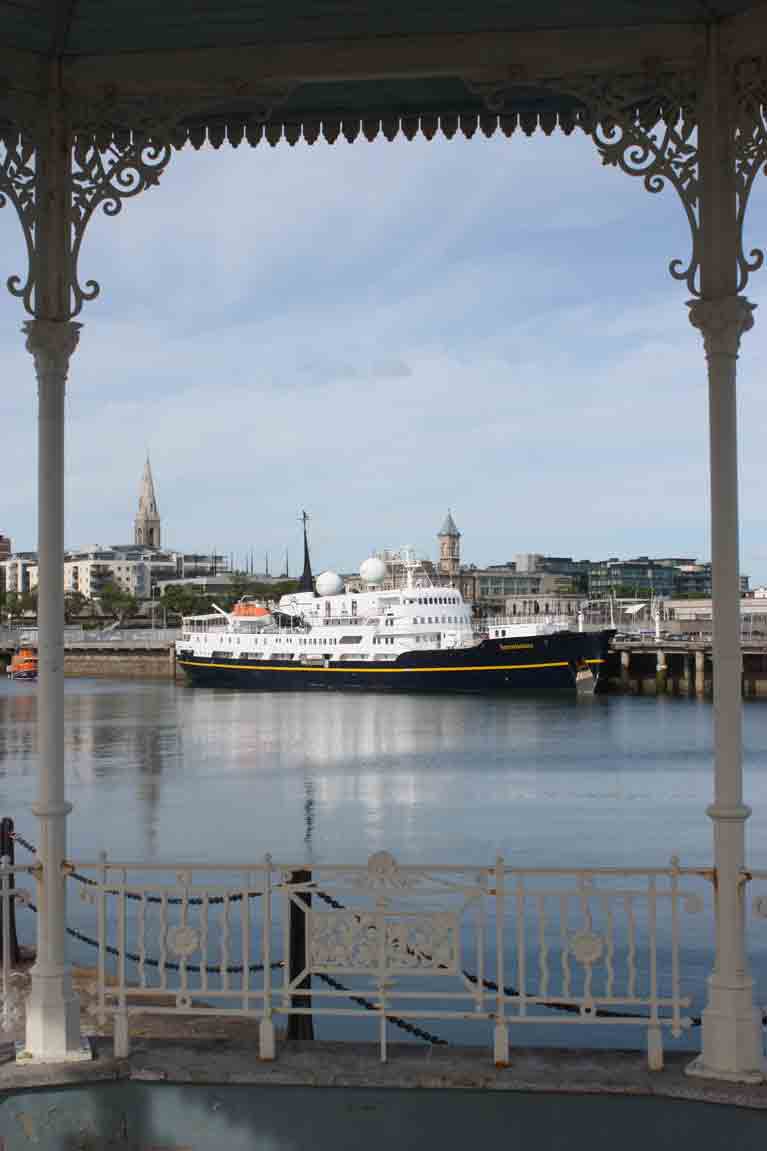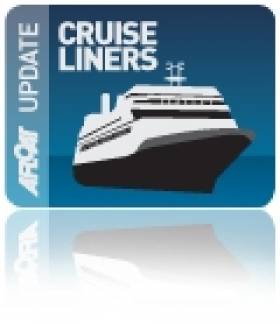Displaying items by tag: Serenissima
Luxury Cruise Ship 'Serenissima' Arrives at Dun Laoghaire, The First of Eight Liner Visits For Harbour Town This Summer
The arrival of the five star luxury cruise ship Serenissima into Dun Laoghaire this morning kicks off the town's summer cruise-liner visits this morning.
Weighing in at over 2,500 tonnes, the Serenissima is the length of a soccer pitch, has 59 cabins and a passenger and crew complement of 160 people, will call today, allowing its passengers and crew take in the sights of Dun Laoghaire and surrounds.
Welcoming the ship into Dun Laoghaire, Carolyn Hanaphy of Dun Laoghaire Harbour Company said today that “the Serenissima is the first of 8 cruise ship visits scheduled for Dun Laoghaire this summer, bringing with them nearly 3,000 passengers and crew into the town. We are always delighted to see these ships come to our town and spend some time here. Each of these ships is welcomed alongside the historic Carlisle Pier leaving disembarking passengers and crew just 500 metres from the town centre where they can enjoy all that Dun Laoghaire offers in terms of hospitality, shopping and good restaurants and pubs all within a short stroll from the ship.”
 Cruise ship 'Serenissima' berthed at the Carlisle Pier in Dun Laoghaire
Cruise ship 'Serenissima' berthed at the Carlisle Pier in Dun Laoghaire
Dun Laoghaire Harbour Master Capt. Simon Coate today said that “Dun Laoghaire Harbour Company work hard to secure luxury ships of this kind to come and visit our harbour. The Serenissima which will stop off on her way around the “Gardens of the British Isles” is a charming vessel with a unique style. During a major refit the owners commissioned Swedish interior designers to create an 18th century influenced Gustavian style interior. The unique style and grandeur of this vessel certainly is in keeping with the unique aesthetics of our 200-year-old harbour, making Dun Laoghaire a sought-after port of call on her voyage.”
The ship is on a 12-day cruise of the “Gardens of the British Isles”. She left Portsmouth 7 days ago and has already made numerous stops along the English coast, has stopped off in Bantry Bay to visit Garnish Island and Waterford and now she is calling to Dun Laoghaire to visit Powerscourt Gardens. The ship will continue onto Wales, Northern Ireland and Scotland on route to her final destination in Oban in Scotland.
Bantry Bay Cruise Scene: A Setting for A Sapphire
#BantryCruiseships – As previously reported, Serenissima (1960/2,598grt) a 110 passenger exploration cruiseship which called to Glengariff mid-week was yesterday followed by Saga Sapphire to the secluded west Cork anchorage, writes Jehan Ashmore.
Operated by Serenissima Cruises, she reflects a different era with classically designed hull forms and overall appearance of an era that remains with the Hurtigruten final traditional ship, Lofoten which celebrates her 50th anniversary this year.
Saga Sapphire (1981/37,301grt) with a 710 passenger capacity is easily the largest cruise ship caller this season to call to Bantry Bay. Operated by Saga Cruises, she had sailed from Killybegs, having also visited Belfast and Dublin.
She is the third caller this season out a total of six to visit Bantry Bay Port which at the turn of this year, saw responsibility for the control of Bantry Bay Harbour transferred to the Port of Cork Company.
The transfer order was made by Minister for Transport, Leo Varadkar TD, and for the purposes of managing operations in Bantry Bay, the Port of Cork Company established a subsidiary company, Bantry Bay Port Company Limited.
To date, Le Boreal and Minerva have called in late May opening the cruise ship season which will also see Amadea call in August make a repeat visit in October to mark the end of the season.
As for the interim fifth visitor to call to Glengariff, Club Med 2 is to make an appearance in September, her 'tallship' presence will further add to the allure of cruising is such a scenic setting.
As there are no berthing facilities to cater for cruiseships alongside charming Glengariff, this all lends to the experience of anchoring in the surrounds of beautiful Bantry Bay.
Nearby is Garnish Island, where many visitors take the small ferry service to the island, where the world renowned gardens are laid out with specimen plants that are rare in this climate.
Serene Cruiseship Caller to Glengariff as Classic Racing Boat Prepares for ICRA Nationals
#CruiseSailing – As Serenissima departed scenic Glengarriff, west Cork yesterday evening, the exploration cruiseship shares connections with Soufriere, an entrant in today's start of the three-day ICRA Nationals held off Dun Laoghaire Harbour, writes Jehan Ashmore.
As W.M. Nixon drew our attention in his Saturday Sailing column of the Spirit 54 sailing classic, Soufriere, she will clearly have a racier sporting presence among the 100 plus ICRA fleet but also the added allure of her debut appearance in a James Bond film.
It was that scene in 'Casino Royale' which saw Daniel Craig as 007 and his co-star Eva Green at the helm along the Venetian waterway of the Canal Grand.
The glamorous pairing of the silver screen stars set in the jewel of Venice, is from where the name of the cruiseship operator, Serenissima Cruises, that takes its name from 'La Serenissima'. The title given to the 'Repubblica di Venezi' that existed until 1797 and which literally translates to 'the most' or 'very serene'.
Such a description is easily applicable to the Italian city on the Adriatic and the same could be said for those sweeping lines of the cruiseship and that of the stylish yacht-racing boat.
So when Stephen O'Flaherty's Soufriere gathers Dublin Bay wind in her sails, having departed the ICRA Nationals host of the Royal Irish YC, the harbour of Dun Laoghaire is also where as previously reported the Serenissima (photo) too made a visit last summer. For footage of her underway off Sandbanks, Poole Harbour click HERE.
To continue on the theme of royalty, on the same day of Serenissina's debut call, Cunard's flagship, Queen Mary 2 also made her inaugural visit while anchored offshore.































































